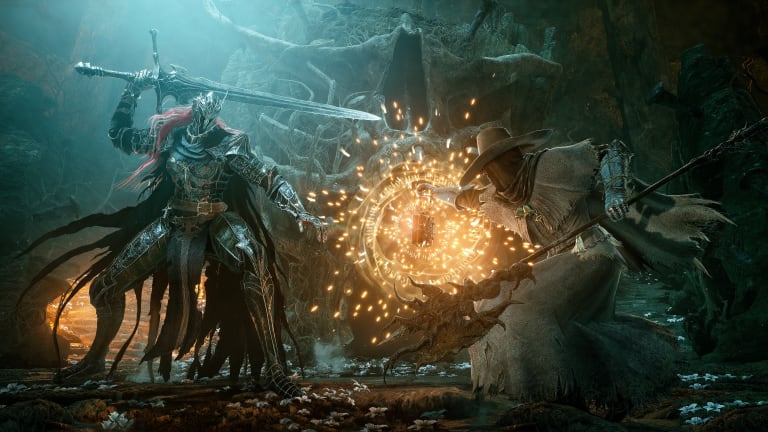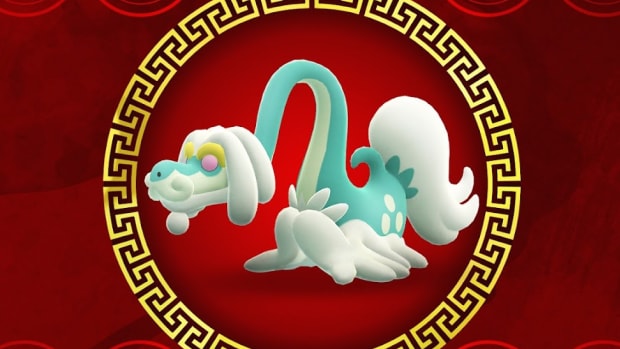
Lords of the Fallen 2023 could be something special

There’s another world alongside our own. You only have to poke the thin membrane and the skin of our reality snaps back, revealing a twisted sister dimension. In one, you’re successful, rich, and loved by everyone. In the other, you’re getting mixed reviews on Steam and have a middling Metacritic score.
The first Lords of the Fallen was one of the original Soulslikes – a new genre that emerged alongside FromSoftware’s brutal game series. There were flashes of potential, but it still felt like a cheap imitation next to the Japanese developer’s work.
Now CI Games is back to give it another shot. Same name, different game. Another opportunity to live up to the genre greats.
The first major change I’m shown is the character customization options. While the original Lords of the Fallen forced you to play as a specific character with a specific moveset, here you can create your own. Big, small. Quick, powerful. Skinny or hench. There are a lot of options and archetypes to choose from, and I’m a particular fan of one who starts out looking like they were ripped straight from the streets of Bloodborne’s Yarnham.

A look into the Umbral dimension in Lords of the Fallen, as well as a peek at that Bloodborne-esque getup.
Our hands-off demo starts in the tutorial section, with the game director talking me through it as another developer plays. The first thing that strikes me is how gorgeous it is, in its own grimy, dirty way. The art team has done a stunning job to bring the visuals up to modern expectations, and it surpasses FromSoftware’s previous works on a technical level at the very least.
You can tell the developers are aware of this as well since the game features a dedicated lantern button – perfect for showing off the beautiful lighting. Press it and you can pull it out, illuminating the dark, gothic architecture surrounding you. But as with a lot of other things in Lords of the Fallen, there’s more to the lantern than it seems.
As my contrived intro hinted, Lords of the Fallen is set in a world where two dimensions exist in parallel. The lantern allows you to peek into that other world.
Each world not only has its own topography – which is used in clever environmental puzzles – but also features its own enemy types and hazards. Raising the lantern places you between the two worlds. In one section, the player explores some wooden scaffold on the side of a cliff. When lighting the area up, it’s revealed that the entire structure is built up the side of a hulking titan – long dead, but still intimidating. “You can climb that,” the person playing the demo tells me.
Enemies can even pull you into that other world, which is also where you’re trapped if you happen to die whilst exploring. However, you don’t lose all your resources unless you die out there in the other dimension – in the cold, damp dark.
While exploring this other world, your character slowly loses their mind. As that happens, enemies descend on you, and you’re faced with illusions and other hardships. Reach an anchor before you go completely bonkers and you can return to the real world with all your experience points intact. The team also added customizable anchors, which you can drop anywhere in the world. They only last for a set amount of time, but you can effectively create your own checkpoints in the more difficult areas and give yourself a halfway house in the belly of the beast. When you reach New Game+, these customizable anchors are the only ones that exist – don’t place any checkpoints and you simply won’t have any. Oof.
While this might sound like a slog – especially considering the world is five times bigger than the first game’s – the team has done an exceptional job of making sure the level design is interconnected. Taking the debug camera and flying me through the environments, I can’t help but be impressed by how it all fits together. It reminds me of the way the first Dark Souls is laid out, with areas looping back around and reemerging in unexpected locations. At one point, the camera zooms up the inside of a huge church tower, revealing another area high above where the character currently stands.
“So the world is semi-open, which means from every level, you can go in two directions, and every three levels loop back into each other,” game director Cezar Virtosu explains. “Our areas are hard to be defined by levels because some of them are vast, and some of them are small, but it is supremely interconnected.”
It also has that FromSoftware quality of piecing together how the people of this world lived from environmental cues. It isn’t just a series of spaces – it’s a place where people lived and worked, where they ate and shit, where they held their religious artifacts or prayed together, or where they studied the stars and looked into the secrets of the cosmos.
Duality is the main theme of the game, in case you didn’t gather that from the dual realities, and this is reflected elsewhere in the worlds and characters, too. One boss I’m shown is actually two characters – conjoined twins who hate each other because one dominates the other. The second phase of the fight sees the less dominant twin take over and unleash his untapped power. The boss moves like a contortionist, twisting and flailing, making them hard to read, and looking nightmarish while doing it.
“We wanted bosses to shock you, and we wanted body horror, because we wanted you to ask, ‘what is the nature of this world?’” Vitosu says. “Why is it skeweing things the way it is? Obviously, the nature of it – it's a huge part of the narrative, and why we're so keen on having the player piece everything together. Now for this boss, as unbelievable as it sounds, it was mocapped by a gentleman called Troy James, who fits in a box.”
And what would be the point in these themes of duality if you couldn’t bring a friend? You can also explore this vast world with another player in co-op, playing the entire game in one uninterrupted session, if you so wish. This is encouraged by a system that grants co-op players access to certain goodies, including full sets of armor, for reaching certain milestones together. Obviously, the combat difficulty will be scaled up to account for another soul.
Combat has been completely rehashed, too. It’s still methodical, but you have many more tools at your disposal. At one point in the demo, the player yanks the soul from an enemy, pulling it just over a ledge and forcing their body to chase after their essence, which causes them to fall off the platform and to their death.
“We wanted to nail that elusive Soulslike combat,” Virtosu says. “There is a lot of knowledge that we found out along the way, but we want it to land perfectly to address all the feedback that the previous game had.”
The first major change is the way parrying works. Tap block as the enemy attack hits and you’ll parry. Miss it and you’ll simply block instead. This way, as long as you’re thinking defensively in fights, you can try for those reversals without worrying about eating a massive hit if you mistime it. Maybe dodge the big ones though, eh?
Then there’s the magic, which is by far the most impressive thing about combat here. You can map magic to a quick radial however you like to create your own spell combos. Magic in Lords of the Fallen is fast and violent, akin to melee combat or gun kata from the 2002 movie Equilibrium. There’s no massive wind-up with a catalyst – it’s all spins and pirouettes, with fire and crackling energy firing from the player’s hands. You can even get in close and fire them off, mixing spellcasting with sword strikes, the animations fluidly blending from one attack to the next. If you want to lean right into it, later spells allow you to call in biblical meteor showers and annihilate entire groups of enemies.
“We wanted to achieve that Jedi fantasy, where you swing the sword and do a little force push and you continue with the sword,” Virtosu says.
From what I’ve seen so far, the team appears to be nailing it. The world is intriguing and darkly beautiful, the combat is fast without losing the methodical nature of these games, and the dual worlds system is implemented in a way that rivals Soul Reaver. I’ve taken a peek into an alternate dimension where Lords of the Fallen could be something special, and I can’t wait to find out if it actually is.





